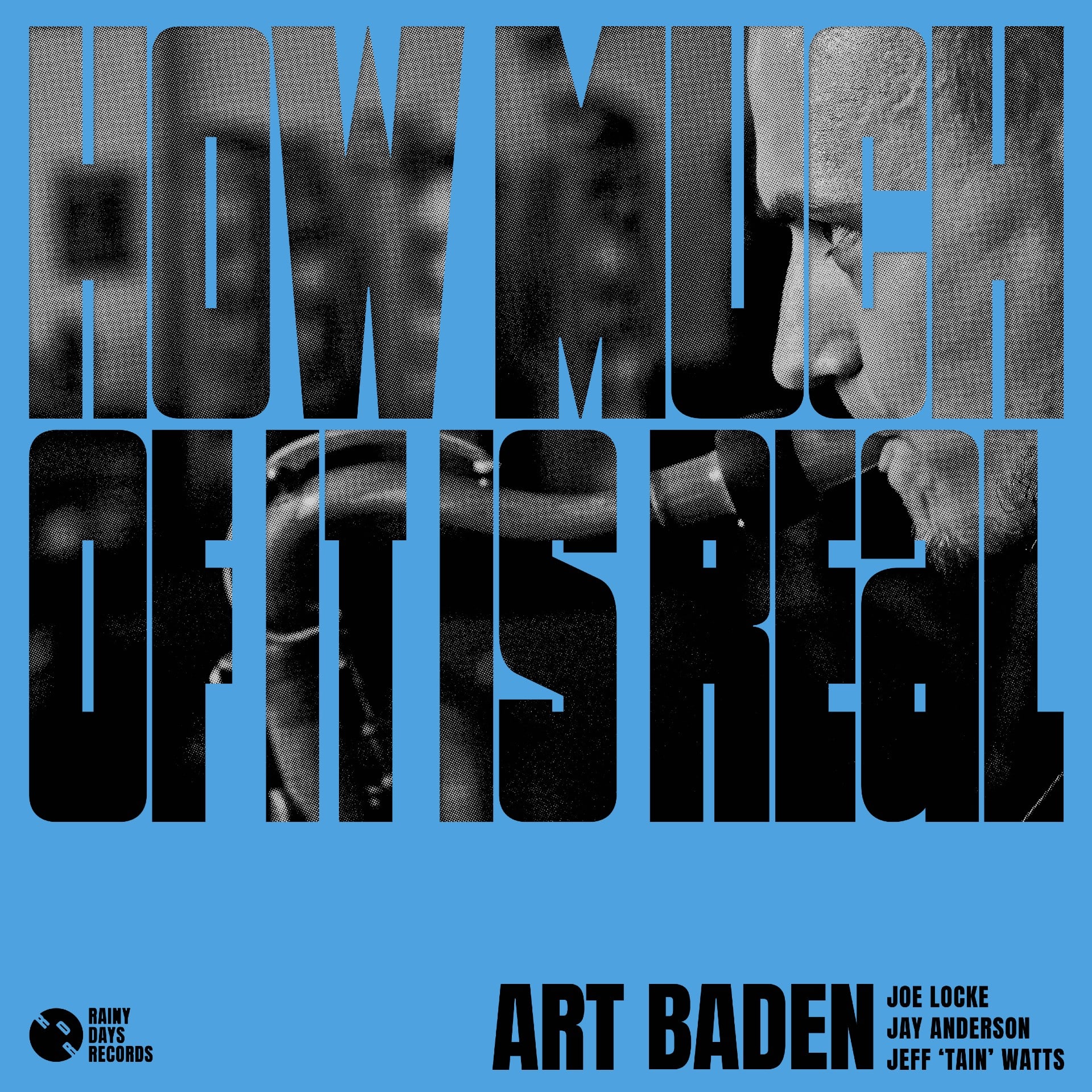Russian-born tenor sax maestro and flautist Art Baden delivers a stirring debut, evoking legends of his instrument such as Wayne Shorter, while finding a distinct voice and improvisational style.
On How Much Of It Is Real? Baden is flanked by an impressive line-up of American musicians: Joe Locke on vibraphone and keyboards, Jay Anderson on bass, and Jeff ‘Tain’ Watts on drums. Each of these great musicians – Locke in particular – acted as a mentor to Baden while he was studying at the Herbie Hancock Institute of Music in LA. The six Baden originals on this album were composed during his studies, and recorded shortly afterwards.
The album opener “4th Cycle” was composed as part of an assignment set by Herbie Hancock himself, with the title referencing the four cycles of compositional revision that the piece went through to reach its finished state. It’s a classy opening salvo for the record, imbued with keen melodic interplay between Baden’s lead lines and the vibraphone work of Locke, but what really lifts it is the improvisational intent of the band leader.
The record is split between propulsive post-bop cuts such as the lively and engaging “Chaotic Neutral”, which features a rousing solo from Locke, and more contemplative, cooler compositions like the short but affecting title track, and “Real People”.
The tonal variation of the record and the range of compositional territories that it explores is a product of the inspirations Baden brings to the table. As a young musician, he moved from Russia to the USA to study, immersing himself in another culture and the traditions of its jazz scene.
The record is a sonic exploration of the life events, decisions and influences that have got its creator to the point of its creation. You can feel the distance travelled and personal growth throughout the compositions, and in the way they are ordered and presented to the listener.
The influences on Baden are clear. Many of the heavyweights of the tenor sax such as John Coltrane and Wayne Shorter loom large in the work on display. But while Baden may be exploring some familiar territory, the results are far from derivative. Baden’s wild improvisational style helps create a significant point of difference and mark him out from the crowd. There may be a lot here that is pretty classic in tone for a modern jazz record, but it’s delivered with contemporary flair.
Each player puts in a strong turn, with notable standout moments. Watts delivers propulsive off-kilter drum grooves on album highlight “Chaotic Neutral”, while Anderson’s bass-work comes to the fore on the emotionally potent “Real People”.
Throughout the record, Locke’s playing provides a melodic counterpoint to the lead lines that Baden lays down. It seems fitting then, that the only non-Baden penned track is the closer, “Silky”, which was composed by Locke especially for this project. Taking inspiration from “Real People”, Locke provides a finale that ties in closely with the record’s cooler, calmer moments and gives a sense of emotional resolution at the end of a set that navigates many influences and sonic moods.
How Much Of It Is Real? is a strong debut from an artist already demonstrating serious compositional chops as well as emotional range in his playing. For Art Baden, this is the first step of a musical journey that could branch off in a myriad of different directions.


